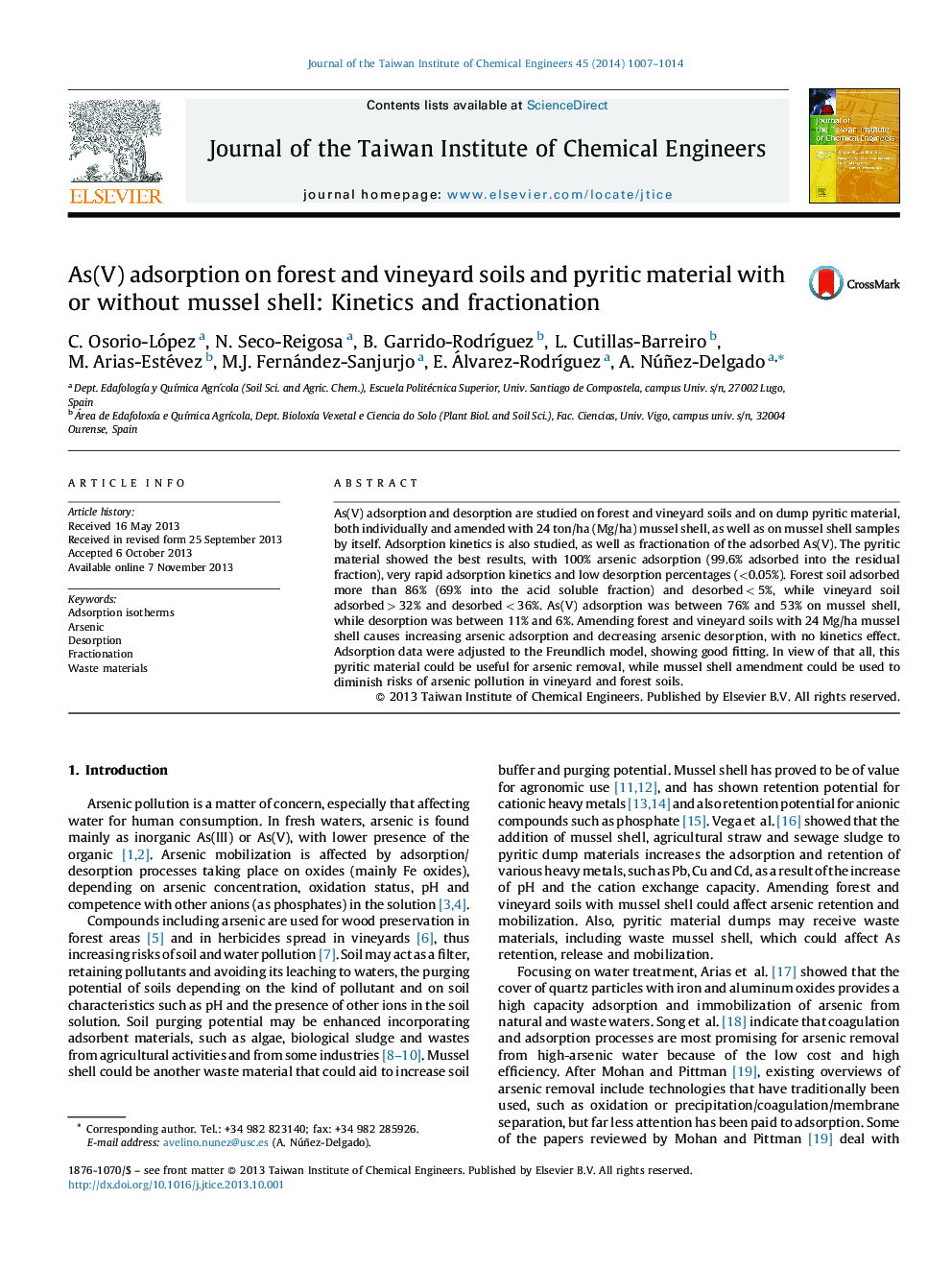| Article ID | Journal | Published Year | Pages | File Type |
|---|---|---|---|---|
| 691271 | Journal of the Taiwan Institute of Chemical Engineers | 2014 | 8 Pages |
•The pyritic material shows 100% As(V) adsorption and <0.05% desorption.•The adsorption kinetics is very rapid in the pyritic material.•As(V) retention is much higher in forest than in vineyard soil.•Soils amended with mussel shell show higher As(V) retention.•For pyritic material, 99.6% of the adsorbed As(V) was into the residual fraction.
As(V) adsorption and desorption are studied on forest and vineyard soils and on dump pyritic material, both individually and amended with 24 ton/ha (Mg/ha) mussel shell, as well as on mussel shell samples by itself. Adsorption kinetics is also studied, as well as fractionation of the adsorbed As(V). The pyritic material showed the best results, with 100% arsenic adsorption (99.6% adsorbed into the residual fraction), very rapid adsorption kinetics and low desorption percentages (<0.05%). Forest soil adsorbed more than 86% (69% into the acid soluble fraction) and desorbed < 5%, while vineyard soil adsorbed > 32% and desorbed < 36%. As(V) adsorption was between 76% and 53% on mussel shell, while desorption was between 11% and 6%. Amending forest and vineyard soils with 24 Mg/ha mussel shell causes increasing arsenic adsorption and decreasing arsenic desorption, with no kinetics effect. Adsorption data were adjusted to the Freundlich model, showing good fitting. In view of that all, this pyritic material could be useful for arsenic removal, while mussel shell amendment could be used to diminish risks of arsenic pollution in vineyard and forest soils.
